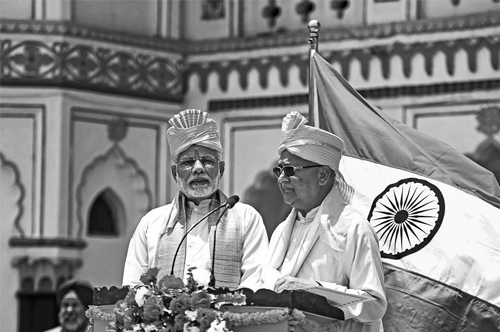
Prime Minister Narendra Modi’s current visit to Nepal, his third in four years, is to consolidate the restoration of goodwill and confidence that resulted from Nepali Prime Minister KP Sharma Oli’s visit to India after being elected to office for the second time. It was Oli’s first visit abroad after his Left Alliance had swept the polls in Nepal and did much to relieve the strains in India-Nepal ties.
In April, both sides had agreed to step up their bilateral engagement and take the relationship forward, as Oli had said, on the basis of “equality, mutual trust and respect.” Ties had frayed over Nepal’s new constitution, which India considered as discriminatory against the minority and deprived groups in the country. The Nepali government blamed India for supporting a transportation blockade by dissidents in Terai region that shut off essential supplies to Kathmandu for weeks. The KP Oli government had turned to China during those difficult times and concluded a trade and transit treaty with Beijing that provided the landlocked nation with another access route beyond India.
The Indian government had lost considerable goodwill among the people of Nepal over the road blockage and was dismayed at the increasing Chinese presence in Nepal. New Delhi began moves to restore the ties after elections in Nepal resulted in a two-thirds majority for a Left Alliance, inviting Oli to visit India as soon as possible. His visit helped to soften his pro-China image in India and put the ties back on track.
Modi’s visit takes place two weeks after a high profile reset in relations with China. Modi’s fruitful meeting with Chinese President Xi Jinping in Wuhan will have an impact on India-Nepal relations. As India and China lower the adversarial intensity of their relations, reducing suspicion and mistrust, it would decrease the capacity of South Asian governments to play the two countries against each other. Kathmandu’s Left Alliance government has laid emphasis on its policy to balance the ties with its two neighbours.
New Delhi has been uneasy over China’s fast-paced inroads into Nepal with proposals for large infrastructure projects. Oli is due to visit China shortly; he had disregarded the demand from some circles in Kathmandu that Modi’s visit should be deferred till Oli had met the Chinese leadership in Beijing. Kathmandu has recently announced that it would float a global tender for the construction of the 1200 MW Budhigandaki hydro project which was to be built by China’s Gezhouba group. The Chinese contract had been cancelled just before the elections on the grounds of irregularities in the award process. Some victorious Left leaders had called for reinstating the Chinese contract but the government is opening it to global players.
Modi’s visit has laid stress on the common links with Nepal with visits to the Janaki temple and the Muktinath temple. The high altitude shrine at Muktinath near the Tibet border is sacred to both Hindus and Buddhists, and is considered a shaktipeeth by Hindus. Nepal’s Home Minister Ram Bahadur Thapa described the visits as taking “to new heights the historical, cultural and religious ties between Nepal and India.” Modi was to visit Janakpur during his second visit to Nepal in November 2014 for the Saarc summit but could not do so for “security reasons”. But the two sides signed an agreement to declare Janakpur, considered the birthplace of Sita, and Ayodhya as twin cities. The linking of the “Ramayan circuit” which covers 11 locations in India to Janakpur by bus would bring more tourists from India to the Nepali temple town.
While regular exchange of high level visits helps advance the bilateral ties, there are some issues that would need to be addressed by both sides. Social media chatter in Nepal shows that while the resentment over the road blockage has reduced, it still pops up over some long pending matters. Revision of the 1950 Treaty of Peace and Friendship to reflect contemporary realities is a demand that has been voiced on several occasions. An Eminent Persons Group was constituted in 2016 to go into the gamut of bilateral relations; it is likely to present its findings within a few weeks. The Maoists, now heading the Left Alliance, have demanded a ban on Nepalis being employed in foreign armies; such a ban would impact India, which has several Gorkha regiments and the UK is already reducing the number of Gorkha soldiers in its army.
On its part, India has the Arun III hydropower project, the oil pipeline to Nepal, projects to enhance agriculture production as well as a proposal for a rail link from Raxaul to Kathmandu that was announced during Oli’s visit. As India works to strengthen relations with Nepal, the important factor that would boost its image would be the time-bound implementation of its projects in Nepal.



